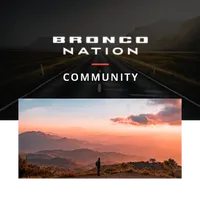Here at Bronco Nation, we get excited about Broncos, and we get excited about the special, out-of-the-way places that Broncos can take us. In this series, we’re going to cross the country, highlighting a few of the best trails in each region. Before you go off-road, you want to know what type of terrain you can expect and what equipment you should pack, so you can have the best trail ride ever.
THE SOUTHEAST
While the Southeast doesn’t have the same reputation for amazing trails as the Mountain West, it has an outstanding variety of terrain that can surprise and challenge you. You’ll encounter everything from sand to swamp, mud to mountain, palm trees to pine trees. The trails we’re highlighting offer features like creek crossings and mudholes, as well as unexpected obstacles in the form of fallen trees and, well, excessively big mudholes. Some of the state wildlife management areas and forest roads you’ll be entering are more often sought out for hunting, hiking, dirt biking, boating, camping, or fishing, so off-roaders who respect their surroundings will help keep these trails open to our preferred recreation as well.
In order to protect your surroundings and yourselves, you’ll need to plan and prepare. When you’re heading into the wild, you’re heading out of reliable cell phone coverage, so bring paper maps or a dedicated GPS unit. Pack a first aid kit, plenty of water, and weather-appropriate clothing. Bring a tire gauge and an air compressor so you can air down and back up. And have a recovery kit so that if you get stuck, you can get unstuck. If you’re not experienced using this gear, bring along friends who are, until you learn those skills. Not sure where to find those knowledgeable friends? Join the community conversation in the Bronco Nation forums!







Comments
You must log in or register to post here.